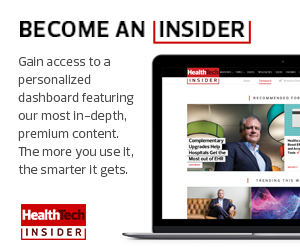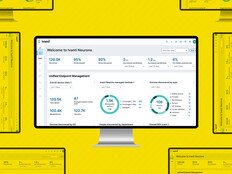What’s the Difference Between Windows 7 and Windows 10?
Released on July 29, 2015, Windows 10 is now the operating system of choice for more than 61 percent of all Windows-based PCs.
In some ways, the design looks forward and back: Unlike recent iterations, the latest version marks a return to the classic Start Menu for access to applications — and it also includes Live Tiles that show relevant, real-time data (a nod to Windows 8 functionality).
In addition, Windows 10 streamlines search and notification functions with a dedicated search bar at the bottom of the desktop and notification center in the bottom-right corner, making it easier for users to search, schedule upgrades or make changes.
It’s also notable for incorporating virtual desktops, automatic updates and improved security. A detailed rundown in BizTech explains these and other points to consider.
READ MORE: The Complete Business Guide to Windows 10
What to Ask When Moving to Windows 10
A Windows 10 rollout requires advance planning and team cooperation to successfully execute. That outcome is especially critical in healthcare, an industry prone to hacking and whose mobile tools are increasing in use and number.
Among the questions that businesses should be asking:
- Should we upgrade to Windows 10 or perform a fresh installation?
- What tasks should be on our Windows 10 migration checklist?
- How can we avoid data loss during a Windows 10 transition?
Making sure all stakeholders are educated and aligned before a kickoff is critical, notes technology consultant and Microsoft Certified Systems Engineer Russell Smith, who addresses these issues and more below.
READ MORE: 5 Essential Questions to Answer for a Smooth Windows 10 Migration
Why Windows 10 Benefits Healthcare Organizations
Enhanced security functions found in Windows 10 are key to helping protect medical data and devices from harm. They include:
- Tools to thwart ransomware, including a whitelist capability that designates which apps can access and change files
- An anti-malware program that scans, quarantines and removes malware
- A sophisticated, cloud-based service for managing security threats across Windows 10 computers
Windows 10 includes tools for smarter browsing and collaboration, including the Microsoft Edge browser. Users can annotate web pages using a keyboard or a stylus pen on the touch screen of a Microsoft Surface tablet, and share the notes. The software also works faster than its predecessors, thus boosting productivity.
In addition, Microsoft recently announced new Teams features that include advanced messaging capabilities, such as priority notifications and message delegation. The features also can integrate electronic health records for better care coordination.
READ MORE: How Windows 10 Can Improve Healthcare Collaboration, Communication
How Healthcare Organizations Prepared for Windows 10
A Windows 10 transition doesn’t happen overnight, as a HealthTech profile of several hospitals and clinics making the move have found.
Kelsey-Seybold Clinic in Houston spent two years preparing for a migration. The system’s IT staff made the shift look easy — but the process required infrastructure upgrades, training and painstaking work to ensure applications would be compatible with the new operating system.
Similarly, Michigan Medicine opted to replace 70 percent of its 35,000 aging computers to ensure Windows 10 compliance and usability. To tackle the massive task, the medical system hired a third party to warehouse and unbox new equipment; it also created three internal teams to manage progress across facilities.
Allegro Pediatrics in Washington state also started early, by allowing some doctors to test and familiarize themselves with computers equipped with Windows 10 before a companywide rollout. “It was one of the easiest transitions I’ve ever been part of,” says Brock Morris, Allegro’s CIO and chief marketing and communications officer.
READ MORE: Healthcare Organizations Face Hurdles as They Move to Windows 10
Windows 10 Brings Renewed Focus on Device Security
Windows 7’s end of life has massive implications for healthcare organizations, many of which haven’t updated their supporting infrastructure for medical devices due to longer device and vendor lifecycles.
Also complicating matters: a number of medical device manufacturers continue to ship devices that have computers running Windows 7.
A critical step is isolating and segmenting legacy Windows 7, Server 2008 and older devices so they don’t communicate with the rest of the network unless absolutely necessary. Network segmentation also reduces the attack surface and can prevent attackers from probing and pivoting across the network.
Provider organizations should also develop solutions to run applications that cannot be updated to newer versions of Windows remotely. It’s possible to run these applications on an isolated environment and use a tool like Microsoft RemoteApp to display them on newer PCs.
READ MORE: Device Security Must Be Top of Mind for Providers During a Windows 10 Migration











